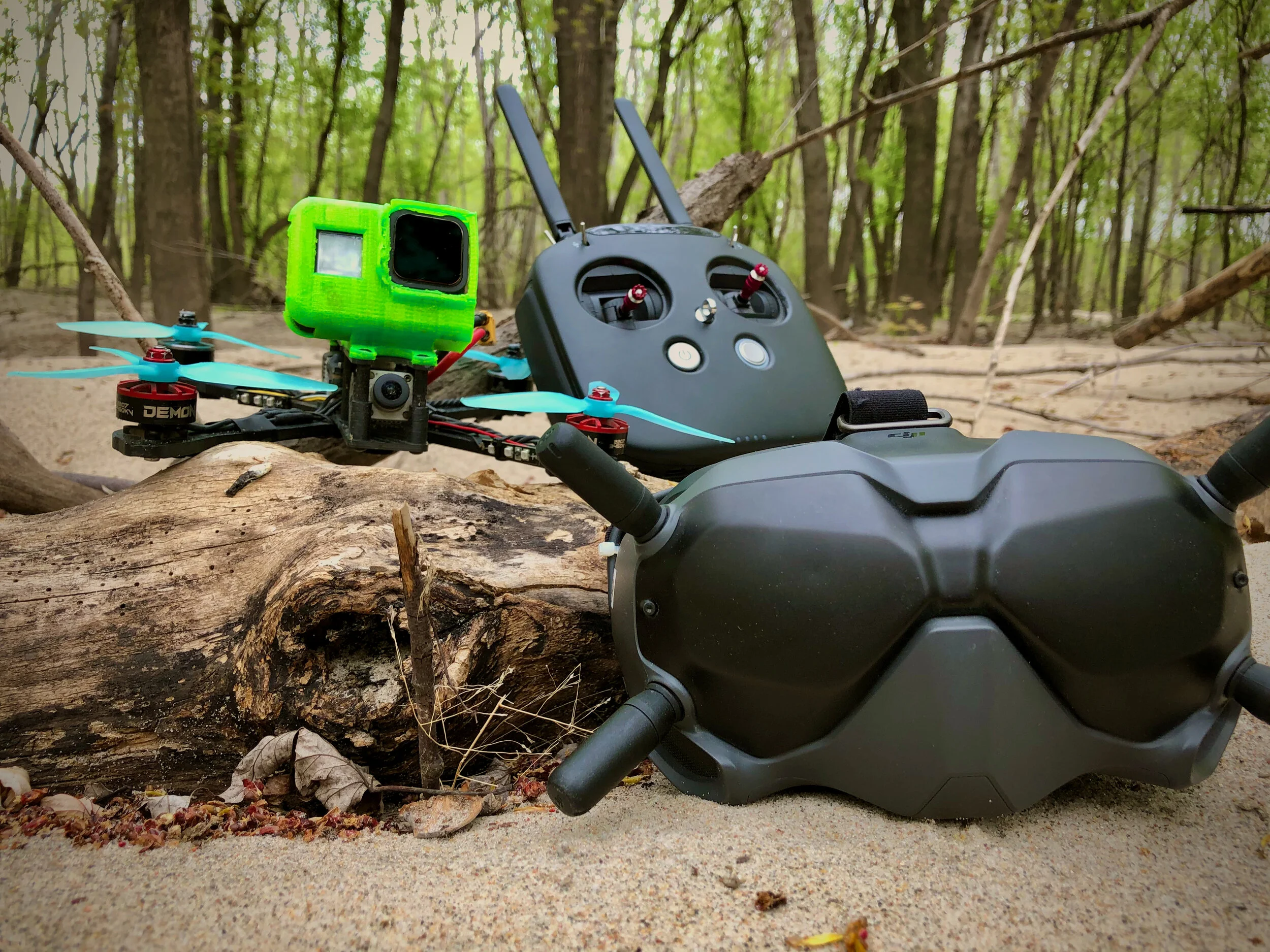Getting Started with FPV
Getting started in the world of RC FPV aircraft can be a very intimidating endeavor. Here is some advice to make the journey as easy as possible.
Step 1: Get a Radio and Practice in a Flight Simulator
The first step is to buy a radio transmitter. Radios come in all shapes, sizes, and price points. Many radios only work with receivers that are running the same “language” or radio protocol while others come with the ability to speak multiple languages, known as multiprotocol. Radios also come in different stick configurations or “modes”. Mode 2 is the most popular and we suggest you purchase a mode 2 radio.
I used to recommend the BetaFPV LiteRadio 2 SE ( Mode 2, FrSky version) however there have been too many reports of poorly built radios and issues using it with a Mac and simulators so I no longer recommend this radio. At $39 it was hard to beat but for a little more money the Jumper T-Lite may be a much better option. Both of these radios come in a form factor that may be very familiar to anyone with a background in console gaming. Another great radio that comes in a game controller form factor is the TBS Tango II. The Tango II is a high quality radio designed to work with the crossfire radio protocol and can transmit signals extremely far.
If game controller shaped radios are not your style, you might want to look at one of the more traditional radios which generally have more switches, buttons, large screens, and module bays. The most commonly recommended radio in this category right now is the Radio Master tx16s. If you are planning to use the DJI HD Digital FPV System, the DJI FPV radio is a great choice. Just be aware that it only works with aircraft containing the DJI FPV system but is very easy to setup and use due to the tight integration with all the DJI FPV components.
Once you have a radio, connect it to your computer and practice flying in an FPV flight simulator. If you opt for the DJI radio, you can connect that to a flight simulator as well using a USB cable if you are running the updated firmware. Flying in a simulator is a great way to get your first 1000 crashes out of the way without breaking any components. There are lots of great simulators out there to choose from but if you want something free that works on almost any computer, try the Curry Kitten FPV Simulator.
Step 2: Find Pilots Near You
Sometimes having someone local is the best resource for getting help when you need it. They can point out safe spots to fly and might be willing to meet up for group events. To find someone who flies FPV near you search Facebook, YouTube, and MultiGP. Try searching for the nearest large city to your location + FPV, and you will likely find a group of people who are also into this awesome hobby.
Step 3: Education & Regulations
At this point it would be a good idea to start learning some terms used by the FPV community, do research, learn about various aspects of FPV, and get familiar with the airspace regulations. To further your education, watch videos and join live streams by Joshua Bardwell, UAVFutures, Mr. Steele, and others. Even if you don’t understand everything they say, watching their videos and tuning into their live streams will help teach you a lot about FPV such as how to charge a LiPo battery safely. For further education and assistance, join some of the FPV related Discord channels, FPV subreddits ( r/Multicopter r/fpv r/multicopterbuilds r/fpvracing ), the IntoFPV forum, and ask questions. Or if you would rather, you can get all the training in one location by purchasing a set of training courses from FPV Unlocked. Don’t forget to stay up to date on information related to the current state of regulations from the FPV Freedom Coalition. If you are flying FPV in the US you need to know that you can fly recreationally if you follow these rules. If the intent of your flights is anything other than purely for fun, then you will need to study for and pass a test to become a part 107 pilot.
Step 4: Buy or Build Your First Drone
Deciding which drone to buy or build can be very difficult as there is now a huge variety to choose from. Hopefully you have gleaned enough information from the education step above to have an idea of what kind of drone you want to start with. Some people decide that buying a Whoop class drone ( something small enough to fit in the palm of your hand) is the best way to get started due to their size, ability to survive crashes, and can be flown indoors. Others prefer to jump right in to the 5" class and build their own.
If you are the kind of person that wants to get your hands dirty and build your own, check out Joshua Bardwell’s FPV Shopping List. He has lots of good info in there and explanations as to why you should choose each component. Knowing how to solder is very important when building or repairing your drone so it is a good idea to get a quality soldering iron, watch some tutorials, and practice before the iron ever touches your drone. The last thing you want is a solder joint failing while your drone is zipping across the sky at top speed.
Step 5: Goggles
To truly fly FPV, you are going to need a screen. Most pilots will opt for a goggle of some sort. If you are just starting out and have decided not to go the DJI FPV route, get some relatively inexpensive box goggles. The eachine EV800D gets good reviews but check out the other goggles on Joshua Bardwell’s shopping list as well. If you outgrow the EV800Ds and you want to upgrade, they make great passenger goggles to bring friends and family along for a ride, which is also a great way to spread the hobby and get others interested.
Step 6: Enjoy!
I know it may seem daunting and there is a lot to learn, but it is fun and well worth the effort. So now is the time to get out there in a big open field and fly safely! The more you fly, the better you will get.
Last updated March 2021







